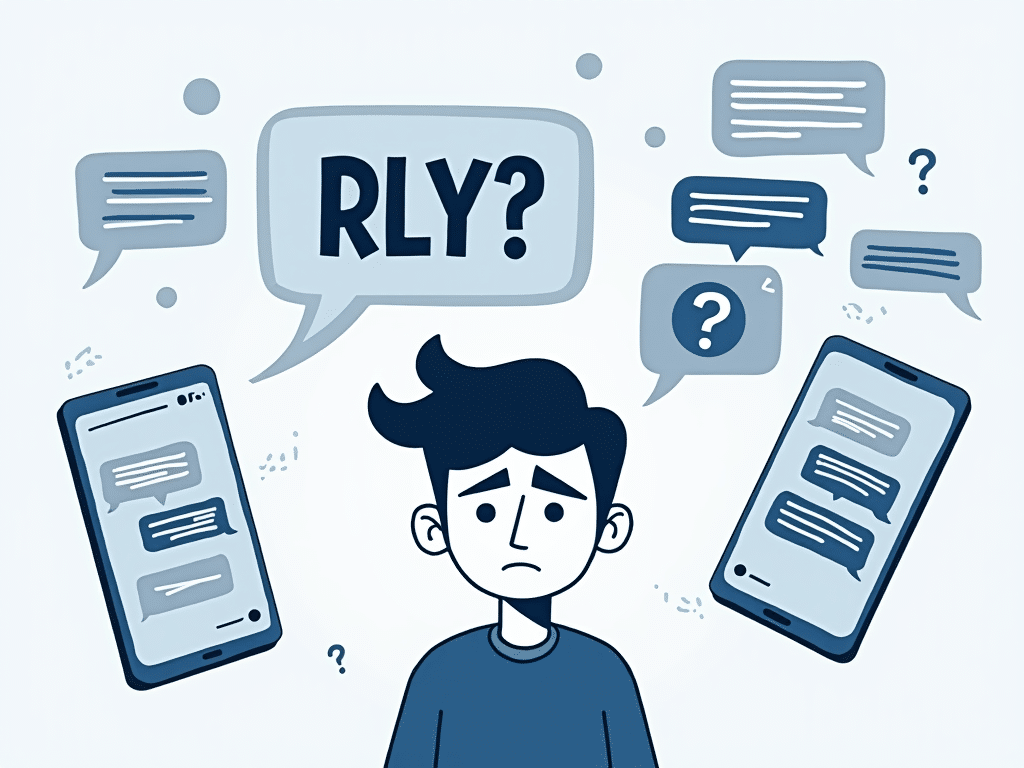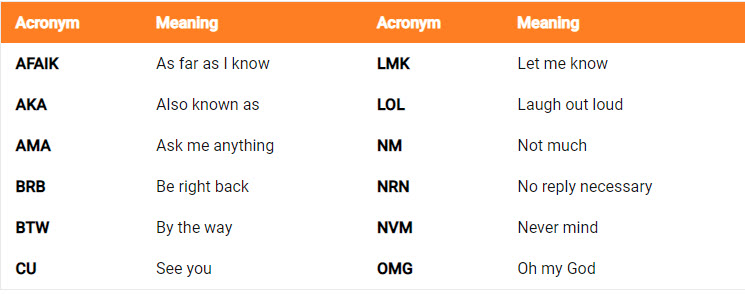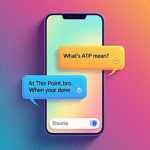In today’s fast-paced digital age, communication is often about efficiency and speed. Acronyms have become an integral part of online and mobile conversations— they save time and convey messages quickly. RLY, which stands for “really,” is one such acronym. Below, let’s unravel the meaning of RLY, understand its usage, and delve into the broader context of acronyms in digital communication.
Exploring the World of Internet Acronyms: What Does RLY Mean?
| Key Takeaway | Explanation |
|---|---|
| RLY Meaning | RLY is an abbreviation for “really” used to emphasize a point, reaction, or feeling in digital communication. |
| Acronyms in Conversation | Acronyms like RLY make digital conversations more efficient, mimicking the pace of real-time speech. |
| Choosing RLY | RLY is often chosen for its brevity, versatility, and popularity among other internet abbreviations. |
| Language Evolution | Internet language, including RLY, is ever-changing, reflecting shifts in culture and communication styles. |
| Emotional Expression | Acronyms have limitations in conveying tone, with RLY and others often requiring context to interpret sentiment. |
| Common Acronyms | RLY is one of many acronyms—some relate to emotions (IHHT), actions (FYP), and specific contexts (GRWM). |
| Online Culture | Internet acronyms contribute to online culture, creating camaraderie and group identity among users. |
| Miscommunication Risk | Acronyms can cause confusion but can be mitigated by using them in context and providing clarification when necessary. |
The Meaning of RLY and Its Usage

RLY is the abbreviated form of “really,” an adverb that is used to emphasize a statement or a question. Online, space and time are at a premium, and acronyms like RLY come in handy. They keep the conversation flowing rapidly without the need for typing out complete phrases. RLY can be found in a vast range of digital interactions, from informal texts to casual social media posts.
Here’s when you might encounter RLY:
- To show agreement or confirmation: “RLY like that idea!”
- To express surprise or skepticism: “Is that RLY true?”
- As a one-word reply or reaction to a statement: “RLY…”
RLY Within the Realm of Texting Acronyms

Acronyms serve as lingua franca of the digital world, and RLY is just part of a much larger ecosystem. It often gets used interchangeably with similar expressions like MK (m’kay or okay) and BTW (by the way), depending on the user’s preference. While MK and BTW have their unique uses, RLY is typically chosen for its universal applicability and recognition.
Why might someone choose RLY over other acronyms?
- It’s short and sweet: RLY easily conveys a complete thought.
- Versatility: It can be used in various contexts without confusion.
- Popularity: Due to its frequent use, RLY is widely recognized.
How Internet Acronyms Impact Digital Communication

Internet acronyms like RLY are more than just a convenience—they shape the way we connect with each other online. They allow us to communicate thoughts faster and more efficiently than traditional language. However, this efficiency comes with a need for a balance between brevity and clarity. Acronyms can sometimes be ambiguous or confusing to those not familiar with them, which is why knowing their meaning is essential.
The impact of acronyms on digital communication is notable:
- Time-saving: Messages are much quicker to type and read.
- Conversational: They help mimic the flow of real-time conversation.
The Evolution of Internet Language
Language is a living entity, constantly evolving to suit the needs of its users. The lexicon of online acronyms, including RLY, is subject to change as digital communication evolves. From the classic LOL (laugh out loud) to newer additions like FR (for real) and TTM (talk to me), the evolution of internet language reflects cultural changes and the creative ways users choose to express themselves.
Part of this evolution includes the proliferation of:
- Emotive acronyms: OMG (oh my god), FWIW (for what it’s worth)
- Response acronyms: IDK (I don’t know), NVM (never mind)
- Slang acronyms: YOLO (you only live once), SMH (shaking my head)
Deciphering Emotions and Intentions Through Acronyms
While acronyms serve well for brevity, they can often fall short when it comes to conveying tone and emotion. In face-to-face conversation, nuances are communicated through voice inflection, facial expressions, and body language, but in text, we must rely on context and language cues. RLY can carry emotional undertones that are less about the word’s literal meaning and more about the sentiment behind it. For instance, it can range from a genuine curiosity (“RLY want to know”) to exasperation (“RLY tired of this”).
Contrast this with acronyms like ISTG (I swear to god), which often conveys frustration or earnest conviction. Deciphering the emotional layer in digital communication requires a solid understanding of the common acronyms and their typical usage.
A Quick Reference Guide to Popular Internet Acronyms
Internet acronyms form a diverse and always expanding dictionary. Here’s a quick guide to some of the most popular ones you’re likely to come across:
- Acronyms related to feelings and relationships:
- Acronyms related to actions and reactions:
- Acronyms used in specific contexts:
The Role of Internet Acronyms in Shaping Online Culture
Internet acronyms like RLY and WTD (what the duck—a euphemistic version of WTF) contribute significantly to the culture of online interactions. They foster a sense of camaraderie among users, providing a secret language that feels inclusive to those who understand it. These linguistic shortcuts reflect and influence online behavior, creating common grounds for digital natives and newcomers alike.
Such acronyms serve as social glue, with their usage marking group identity:
- Foster closeness: Shared lingo creates an in-group feeling.
- Cultural references: Many acronyms become internet memes, reinforcing their place in digital culture.
Navigating Misunderstanding with Internet Slang
Despite the benefits of acronyms like RLY, they can be a source of miscommunication, particularly for people who are not well-versed in internet slang. Misinterpretations can occur, especially when acronyms like OMM (on my momma) are not commonly understood or are specific to certain online communities.
Here’s how to minimize confusion:
- Use acronyms in proper context.
- Don’t overuse acronyms—balance them with clear language.
- Include clarification when needed, like using OFC (of course) to underscore a point.
Acronyms will continue to be a cornerstone of digital communication, enriching the online discourse with brevity and a sense of belonging. Understanding the likes of RLY can help us navigate the world of internet jargon confidently, ensuring that the messages we send are both efficient and effectively understood. Whether you’re a seasoned texter or just getting accustomed to the digital vernacular, recognizing the subtle nuances of internet acronyms is key to successful online communication.
In essence, RLY is a microcosm of the larger world of internet acronyms. It personifies the trend of seeking speed and efficiency in communication while underscoring the importance of understanding the nuances behind these shorthand expressions to ensure clarity and preserve the richness of digital interactions.








3 thoughts on “RLY Meaning”